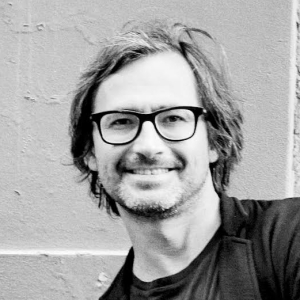Dimitri Ozerkov
Dr. Dimitri Ozerkov
At DFK Paris from January to March 2024
Research project: Dresden in early 1800s. The last years of Vincenzo Brenna
Research Interests


Dresden in early 1800s: the last years of Vincenzo Brenna
Italian architect Vincenzo Brenna (1741–1820) was born and spend the first 40 years of his life in Rome. He was one of the draughtsmen working for The Grand Tour, fascinated by the glory of the Ancient Rome and collaborated with Piranesi. Around 1782 he moved to Poland and then to Russia where he became the first architect of the tsar Paul I and built his main palace in St Petersburg. He returned to Europe after the assassination of the tsar in 1801 and spent his last decades in Dresden. Since his work doesn’t belong to any national art history, he remained almost an unknown figure for many years. Some scholars saw his architecture as the beginnings of Romanticism while others considered his building to be just an expression of the taste of his patrons, the most important of whom was Paul I.
Not much is known about his activity in Dresden. He possessed an important archive of drawings, prints and books at the moment of his death there. The research in German archives and collections might help finding the lost documents. Brenna was taking part in the annual art exhibitions in Saxony so the analysis of the exhibition catalogues and the critical reviews should permit to understand the area of his interests in those years and to explore the esthetical value of his taste. Brenna was also travelling to Rome before it became impossible due to the war. He was participating in the meetings of St Luke’s Academy there and was trading artworks. His three daughters were married in Rome and their archives is a subject of research as well.
About


CV


Dimitri Ozerkov is a Russian art historian and curator specializing in 18th century and contemporary art. From 2007 to 2022 he has held the posts of Director of Contemporary Art Department of the State Hermitage Museum, St. Petersburg, and Head of Hermitage 20/21 Project for Contemporary Art, which involved collecting and displaying contemporary art in the traditional museum. A graduate of the Art History Department of St. Petersburg State University, he became curator of 15th to 18th century French prints at the State Hermitage Museum in 1999 and researched history of the Imperial Print Room. In 2003 he received his PhD from St. Petersburg State University. Under the auspices of the Hermitage 20/21 Project, he has curated or organised over 40 exhibitions, featuring art by Jake and Dinos Chapman, Chuck Close, Wim Delvoye, Antony Gormley, Ilya & Emilia Kabakov, Henry Moore, Jan Fabre, Anselm Kiefer and group exhibitions of young American, British and Japanese artists. In 2011, 2015, and 2018 he led State Hermitage projects for Venice Biennale of contemporary art, exhibiting Dmitry Prigov at Ca' Foscari University, 'Glasstress 2015 Gotika' at Palazzo Franchetti, and 'Futuruins' at Palazzo Fortuny. He left Russia in 2022.
Contact




